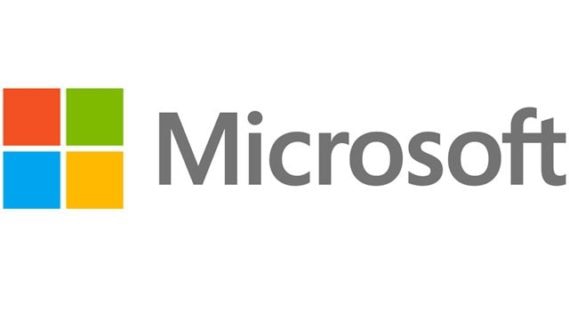March 11, 2022
Realizing the Power of Virtual Care
Technology that connects care providers and patients can deliver better healthcare outcomes.
IN THIS ARTICLE
The Value of Virtual Care
Strategies for Virtual Care Success
The Fundamentals of Virtual Care Technology
Virtual Care Advances and Evolves
Healthcare organizations expanded virtual care in 2020 at an astounding rate, allowing them to continue caring for patients during the COVID-19 pandemic in ways that addressed safety, convenience and efficiency.
In the process, many providers assembled disparate, disconnected solutions and technology that created silos, inconsistent and poor workflows, and less-than-optimal protections for privacy and security. The challenge for providers now is to knit those hastily erected, crisis-driven systems into a cohesive, intentional and strategic platform to provide exceptional virtual care to their patients.
There are compelling reasons for healthcare technology leaders to refine the IT infrastructure that supports virtual care. Chief among them is that virtual care is poised to become highly competitive, thanks to its effectiveness and efficiency for the provider and its convenience for the patient. Providers that can deliver a high-quality digital experience will position themselves as front-runners for both consumers and caregiver talent.
While organizations refine the technologies underpinning virtual care, they also will need to establish appropriate policies and procedures. Together, these will facilitate compliance with regulations and best practices, and will help organizations increase adoption of virtual services by patients and clinicians.
From a competition perspective, virtual care has the potential to significantly alter the healthcare landscape. Maturing capabilities, combined with patients’ embrace of virtual care, open the door to new competitors, disruptions and enhanced consumer expectations. As the field continues to evolve, providers must incorporate these considerations into their post-pandemic business strategies.
A VARIETY OF USES DRIVES WIDE ADOPTION
Telehealth services have broad appeal for patients and care providers, particularly in specialties such as mental health, neurology, gastroenterology, internal medicine, pulmonology, family medicine and pediatrics.
The pandemic accelerated adoption of many forms of virtual care. McKinsey predicts that virtual care could represent up to $250 billion in annual healthcare spending, up from $3 billion before the pandemic.
Patients embraced the ease, safety and convenience of telehealth. Research shows that patients want telehealth to be widely available. McKinsey found that 76 percent of adults are interested in using telehealth.
The Value of Virtual Care
Across the country, especially in rural areas, telehealth has significantly expanded options and accessibility for patients and clinicians. Videoconferencing and collaboration platforms, integrated with electronic health records, make it easy for patients to connect with general practitioners and specialists who may not be available in the immediate area. Clinicians in rural settings can use telehealth to consult with specialists remotely, bringing the expertise of larger health systems to underserved areas.
REMOTE PATIENT MONITORING
RPM, which leverages videoconferencing and collaboration platforms and connected medical devices to manage at-home care, is becoming a more important component of healthcare offerings. Virtual support for chronic disease management, medical management and care coordination are among the top use cases for telehealth.
TELESTROKE CARE
Time is of the essence when healthcare professionals are dealing with a patient who may have had a stroke. Virtual care for these patients enables on-call neurologists to determine quickly if a stroke has occurred and institute appropriate protocols promptly and effectively.
VIRTUAL ROUNDING
This practice lets clinicians see patients without visiting their rooms in person. It saves doctors time and effort by enabling them to check in with patients quickly and easily while also maintaining social distancing practices that help prevent the spread of transmissible diseases.
eICUs
Providing care to the most at-risk patients, an electronic intensive care unit is supported by command centers and in-room audiovisual solutions, which extend critical care staffing and expertise and facilitate data-driven care. This application is particularly valuable for hospitals whose staffs are stretched thin by heavy caseloads.
TELESITTING
This enables a single person to monitor multiple patients (for example, to prevent them from getting out of bed against physicians’ orders). It is far more efficient than having to staff one person for each room, and it allows hospitals to assign personnel to other valuable work.
Learn how CDW can help you deploy virtual care solutions that meet the needs of modern patients.
Patient and Provider Perspectives on Virtual Care
84%
The percentage of urban physicians who say virtual care allows them to provide quality care for chronic disease management1
74%
The percentage of patients who say they would be comfortable discussing health issues with a clinician online or on the phone2
26%
The percentage of patients who would change providers to get a high-quality digital experience3
85%
The percentage of physicians who say telehealth increases timeliness of care4
Sources: 1c19hcc.org, "Telehealth Impact: Physician Survey Analysis," Nov. 16, 2020; 2today.yougov.com, "Americans are getting more comfortable with telemedicine," April 14, 2020; 3accenture.com, "How can leaders make recent digital health gains last?" August 2020; 4ama-assn.org, "In 2022, moving beyond telehealth to digitally enabled care," Jan. 21, 2022
Strategies for Virtual Care Success
The competitive landscape is changing quickly, and virtual care is a significant driver. Healthcare providers must adapt their competitive analyses to this new reality and strategically position their virtual services to new and existing patients.
New competitors are in play among both traditional providers and newcomers intent on disrupting conventional offerings. Just as virtual care facilitates ease of delivery and new services, it also lowers the industry’s barrier to entry.
While patients are eager to embrace virtual care, some research indicates there is a gap between patients’ attitudes and actual use of telehealth. That gap may require providers to develop awareness and education campaigns about their virtual care services, the benefits, how to use them and how the provider will protect patient privacy.
Virtual care also reduces the geographical limitations that have traditionally defined healthcare markets. Although patients still face the constraints of insurance, they are empowered to go farther afield in search of clinicians, particularly specialists. This wider scope will influence the way providers compete for patients.
Optimizing Virtual Care
To make the most of virtual care, providers must create more successful digital experiences, understand the demands of stakeholders and overcome potential challenges to adoption.
DIGITAL EXPERIENCE
A patient’s digital experience throughout an engagement with a healthcare organization is critical. Healthcare organizations need to bring the same approach to patients that retailers have applied to consumers. Providers must deliberately and strategically consider the digital experience as something that begins with a patient’s first moment of engagement. The most innovative hospitals are building digital experiences that give patients a choice between virtual and in-person channels from the outset.
A DIGITAL CHALLENGE
The obstacle that many healthcare organizations face in their virtual care efforts is an existing system that has not consistently prioritized digital experiences. For example, consumers have steadily increased their use of wearables and similar devices, yet only 11 percent say their healthcare providers have recommended digital tools to manage health. Because consumer confidence in technology companies has eroded in recent years, healthcare organizations must demonstrate that they value transparency, privacy and consumer protection.
BARRIERS TO USE
Although many experts expect virtual care to become a common practice, healthcare providers should not regard this outcome as a certainty. Buy-in from patients and clinicians will determine how large these programs become, so it is critical to step back and redesign systems, if necessary, to secure users’ confidence. Implementing the right technology solution is a major part of this process because it can alleviate friction and increase efficiencies for stakeholders.
DRIVING WIDER ADOPTION
Healthcare providers must understand how their clinicians and patients regard virtual care. They also need data to help them understand who is using virtual care services, why and what their experiences are. Further, providers should facilitate patient engagement with tools such as chatbots and with dedicated information on websites to provide resources, best practices and answers to frequently asked questions about telehealth and other virtual care services.
CDW can help your organization find and deploy IT solutions that meet patients’ needs for care.
Digital Investments Pay Off
A recent report from PwC stated that providers are deploying virtual care technologies such as “mobile apps that connect them to their patients, beefing up portals and intensifying use of customer relationship management (CRM) tools. They are using virtual care and analytics to not only improve the customer experience and create regular touchpoints with patients, but also to expand capacity to avoid frustrating or alienating patients.”
76%
The percentage of consumers who would be willing to use a doctor’s or health system’s mobile health app
77%
The percentage of clinicians who say nontraditional care venues, such as on-demand telehealth, are maintaining or improving patient health outcomes
Source: 1PwC, "Medical cost trend: Behind the numbers 2022," August 2021

SOFTWARE PLATFORMS
For many organizations that escalated virtual care rapidly in 2020, the most valuable investment to support the refinement and expansion of these services is an end-to-end platform. Typically provided via Software as a Service, these platforms house virtual care applications and facilitate workflows. Currently, only a small percentage of physicians use a dedicated telehealth solution, and a smaller percentage use an EHR telehealth module, according to the COVID-19 Healthcare Coalition Telehealth Impact Study Work Group.
These platforms also facilitate ancillary activities that support virtual care, such as making appointments, ordering labs and other tests, sharing test results, ordering and following up on medication, and logging patient information. This makes workflows more efficient, which can help increase adoption by clinicians.
Integration, particularly with EHRs, is a best practice for successful virtual care delivery. EHR integration means the videoconferencing and collaboration platform primarily serves to provide the virtual meeting space, while the clinician conducts the visit and manages patient information within the EHR.

ENDPOINT DEVICES
Clinicians and patients can join virtual sessions with simple setups, such as mobile phones, tablets and laptops. However, many clinicians prefer more robust arrangements, such as multiple monitors that make it easier to simultaneously use the videoconferencing platform, enter notes into the EHR and consult images or other materials.
Audiovisual technologies can enhance the quality of the experience significantly, through stand-alone cameras and microphones that allow physicians to create a studio from which to provide care. For other virtual care services, such as eICUs and telesitting, digital cameras are essential for staff to remotely observe several patients at once.
In eICU rooms, caregivers in a command center can observe patients on multiple monitors via high-definition pan-tilt-zoom cameras in patients’ rooms. Locating clinicians within the command center not only extends the reach of critical care staff, but also allows them to make more data-driven decisions about care — for example, using platforms that analyze data from several sources to identify trends and alert clinicians when patients need attention.
SECURITY
The pandemic intensified cybersecurity concerns throughout the healthcare industry. Organizations faced multiple challenges: new threats, an expanded attack surface and new vulnerabilities, including remote employees, rapid expansion of virtual care and suspension of certain HIPAA requirements for telehealth.
For cybercriminals seeking to sell data on the dark web, medical records are among the most lucrative targets. Hackers quickly adapted their attacks to the operating environment of the pandemic. In addition to increased phishing attacks, they seek to exploit vulnerabilities in the devices, networks and software used for telehealth services.
The risks are especially high when employees are using disparate tools and inconsistent procedures in nascent programs that do not have strong security controls — exactly the type of environment in which many telehealth programs expanded during the pandemic. In addition to deploying the appropriate security solutions, organizations must ensure that every employee is well trained in security best practices, particularly on how to identify and avoid phishing attacks.
Virtual care should be subject to data encryption at rest and in transit. Remote monitoring devices, together with devices used for telehealth, virtual rounding and eICUs, should have regular software updates to ensure that patches are installed appropriately. Networking controls and best practices, such as multifactor authentication, should be in place for all virtual care solutions.
Providers should expect that the suspension of HIPAA enforcement in connection with services deployed during the pandemic will be temporary. In the future, these will be subject to the same HIPAA compliance as the rest of the organization.
Finally, it is important to remember that patients are also mindful of privacy and security when it comes to their medical records. Hospitals enjoy a relatively high level of trust among consumers, 84 percent of whom trust hospitals “some” or “very much” to keep their digital information safe, Accenture found. However, that percentage drops for other areas of healthcare, such as nonmedical staff at doctor’s and provider’s offices (63 percent). These perceptions matter as consumers begin to seek out providers offering more comprehensive digital services.
Story by:
Jim Hanus
Ty Mayberry
Tom Stafford
Learn how CDW can help you find the right tools for effective virtual care.







